- Home
- William C. Dietz
Red Tide Page 4
Red Tide Read online
Page 4
Thirty states belonged to NATO and squabbles were common. Israel wanted its Super Dvora Mk III patrol boats, rather than the Pegasus IIs, to lead the way. And after some high-level negotiations they received permission to do so. Ryson’s nemesis Segal would be pleased.
Ryson’s squadron was next, followed by some up-gunned British Scimitar patrol vessels, and a hodgepodge of vessels representing Greece, Italy and France.
An equally diverse selection of destroyers and frigates were to follow, along with two transports, both packed with troops. Admiral Canby knew he couldn’t occupy the entire sweep of the Black Sea’s coastline, but he sure as hell planned to seize the Russian naval base in Sevastopol, and return it to Crimea.
Ryson’s train of though was interrupted as Lieutenant Commander Stacy Sterling stepped out of the wheelhouse. She was the USS Mammatus’s CO, and Squadron 3’s XO. She had green eyes, a spray of freckles that crossed her nose, and navy-short hair. “The Israelis are going in, sir … And it sounds like the Russian boats are waiting for them.”
“All right,” Ryson said. “Let’s keep the formation tight. And, Stacy …”
“Sir?”
“Keep at least half of your Harpoons in reserve. Just in case.”
Sterling knew what Ryson was thinking. Everyone was aware that the Omsk was out there somewhere. And, if the Mammatus had to engage the cruiser, the boat’s Harpoon anti-ship missiles were the PHM’s only hope of putting a dent into the Russian behemoth. Sterling grinned. “Yes, sir. You can count on it.”
Ryson followed Sterling into the wheelhouse. There were three high-backed seats. One for Sterling, one for her coxswain, and one for a guest. Ryson in this case.
Communications were being monitored by a tech in the Electronic Equipment Room, located midship, but the chatter could be heard on the bridge as well.
A lot of the radio traffic was focused on the Italian boat that had run aground, the effort to rescue a seaman who had fallen off the stern of a Scimitar, and a civilian freighter which was trying to enter the Black Sea ahead of the navy vessels. Never mind the fact that it would be sunk.
One-by-one the problems were solved. The Mammatus was ready to follow as Segal’s boats roared into the Black Sea. Like other PHMs, the “M” could operate in the hull borne mode for low-speed travel, or “fly” with the foil extended.
And at the moment, the Mammatus was hull-down, and gradually increasing speed from 8 knots, to about 29 knots, when the boat would become foilborne. The Peg Twos had a great deal in common with the original boats, but there were significant differences too. Not the least of which were superconducting propulsion systems that consisted of two engines, sometimes referred to as “prime movers,” along with generators, and the electric motor controllers that were connected to the ship’s propeller shafts.
In order to deliver greater reliability, two drive motors were connected to each foilborne propeller. So even if one drive motor failed, the boat could still operate at foilborne speeds of up to 36 knots per hour.
Sterling made the announcement that the Mammatus was foilborne, followed by her boat’s motto, which was: “Omnes interficere.” (Kill them all.)
A cheer went up over the intercom and Ryson grinned. Morale was high, and that was good. The Mammatus was blasting along at 52 knots by that time, and the main deck was high above the sea. Rather than what a novice might expect, the ride was rock steady. Just one of the reasons why hydrofoils were good gun platforms.
But steering required considerable skill. The boats were designed to “fly by wire.” And the analogy was apt, since the foils had aileron-like flaps, similar to aircraft wings.
The flaps were coupled to the helm via redundant systems of computers, gyros and accelerometers. Once a course was dialed into the ACS (Automatic Control System) the Mammatus could steer herself. But always under the watchful eyes of the coxswain and a deck officer.
Under combat conditions however, it was impossible to follow a set course. And that meant Petty Officer Po, Sterling’s coxswain, would have the ticklish job of steering the boat as the ACS tried to second guess him.
Squadron 3 was spread out by then with all four boats foilborne and traveling abreast of each other. The Peg Twos carried scaled down versions of the AN/SPY-6 integrated air and missile defense radars used on destroyers.
Electronics Technician Deen was hunkered down in the PHM’s tiny CIC, his eyes flicking from screen-to-screen. He described the action. “We have six, repeat six, bogeys inbound from the northwest,” Deen said. “Based on the feed from the fleet drone they are Russian Raptor patrol boats. Range ten miles and closing.”
Sterling went off intercom in order to query the ship’s AI, which the crew referred to as “Aunt Ida,” because of its soothing female persona. “Give me a readout on Russian Raptor patrol boats.”
Ryson could hear the response. “Russian Raptors are 55 feet long, powered by 2000 hp engines, and equipped with a full suite of cutting edge nav and com systems. Raptors are armed with a remotely operated 14.5mm machine gun located aft of the wheelhouse and high enough to fire over it. Two 7.62mm machine guns are mounted in the stern. Say ‘Details,’ for additional information.”
“No missiles,” Ryson observed. “Good.”
Ryson selected Squadron 3’s frequency and spoke into his mike. “This is Scepter Six. We will engage the incoming targets with guns. After they pass through our formation, pull a one-eighty and reengage. Be careful who you shoot at. Over.”
There was a flurry of confirmations followed by radio silence. But there was no end to the traffic on the fleet freq, where Admiral Canby had some major problems to deal with, including a troop ship that sat dead in the water.
But that was Canby’s problem. Ryson was fighting a battle with himself.
He had to let Sterling command her vessel without offering unsolicited advice, signaling his opinions via body language, or otherwise being a pain in the ass.
But once a boat skipper, always a boat skipper. And keeping his mouth shut would be difficult.
The Raptors were clearly visible by then, white water spraying away from their bows as their large caliber machine guns opened fire. “Target dead ahead,” Sterling said. “Stand by to engage with the 76. Fire.”
The remotely operated 76mm autocannon was housed in a forward mounted turret and capable of firing 85 rounds per minute. GM (gunner’s mate) Ronny Silva, better known as “Guns,” was controlling the weapon via a joystick in the CIC, where he was back-to-back with Deen. “Roger that,” Silva replied. “Outgoing.”
Puffs of gray smoke blew away from the 76 as it opened fire. As he had many times before Ryson marveled at how steady the Peg was when foilborne. Not only that, but the hydrofoil was higher than the oncoming patrol boats and could fire down on them.
By contrast with the PHM, the Russian boats were bouncing in a slight chop which forced their remote operators to constantly re-aim the top-mounted machine guns.
The enemy shells threw up fountains of sea water along the Peg’s port side as the Raptor approached. Guns was hitting the Raptor and hitting it hard. Ryson could see the flashes as thirty mike-mike HE (high explosive) rounds struck the enemy boat. But only for a few seconds.
The Mammatus had a .50 caliber machine gun on each side, just aft of the wheelhouse. And Ryson heard a rhythmic thud, thud, thud as the port gunner raked a passing boat from end-to-end.
The battle was far from one-sided however. The Raptor had two stern-mounted machine guns, both of which fired at the PHM as the vessels parted company.
“The bastards killed the RIB boat!” a sailor exclaimed. “How will we go ashore for beer?”
“Belay that bullshit,” Master Chief Atkins growled from his position adjacent to the CIC. “You and I will chat later.”
All the Pegs had passed through the enemy line by then. “This is Six,” Ryson said. “All boats will turn and chase the Ivans down.”
The hydrofoils had numerous virtues, one of which was
the capacity to execute incredibly tight turns. Ryson had an instinctive desire to shift his weight from one foot to the other as Po put the wheel over, but there was no need to do so, as the ACS put the vessel into a coordinated turn. The Russian gunboats appeared ahead.
They were just starting to come around. As they did so the Ivans exposed the entire length of their hulls to the streams of 76mm HE shells fired by the American vessels.
“Yes!” Sterling exclaimed, as geysers of spray led to the nearest Raptor and bright flashes marked hits. At least three hit the wheelhouse. Armored glass broke, a shell detonated, and the patrol boat slewed around prior coming to a stop.
The top mounted machine gun was still firing as the Mammatus circled its prey and Sterling was having none of that. “Kill that weapon!”
Silva responded with a terse, “Aye, aye, ma’am,” and brought the 76 to bear. Six shells struck the enemy gun in quick succession and the firing stopped.
“Well done,” Sterling said. “I owe you a beer.”
A faint cheer was heard, and Ryson forced himself to refocus. The problem with riding on a boat, any boat, was a loss of situational awareness. Sterling was responsible for one PHM. Ryson had four vessels to worry about. As he scanned the area, Ryson was pleased to see the amount of damage Squadron 3 had done.
Silva’s target was dead in the water and burning. Another Raptor was down at the stern and about to sink. Two vessels were fleeing northeast toward Sevastopol. Another was turning listless circles, as if under power, but with no one at the helm. But where was boat six?
Ryson opened his mike. “This is Six. I see 5 Russian boats? Where is number six?”
“This is Four-Six,” a male voice replied. “The vessel you’re referring to went boom. Over.”
Ryson had a vague memory of an explosion. “Nice work, Four-Six. Six-Two will set a course for Objective 2. Form a line astern. Over.”
As Po brought the Mammatus around Ryson took a moment to assess the larger battle. It wasn’t easy. Ryson could access individual pieces of data—only Canby and his staff understood the full sweep of events.
But according to the tidbits Ryson could glean from the fleet drone feeds, and the choppy radio traffic, it was clear that the drifting troop ship had been attacked by Russian planes and was sinking.
That meant critical resources were focused on rescuing hundreds of men and women from the dying ship and the surrounding water. That effort included two destroyers.
From what Ryson could tell the air war wasn’t being won or lost. Both sides had thrown everything they could into the sky and the result was a bloody draw.
As for the other small boat squadrons, Segal’s Super Dvora Mk III patrol boats were engaged with a hulking Project 22160 patrol ship, which was more like a destroyer than a missile boat, and heavily armed. If Segal’s sailors managed to defeat the 160 no one, Ryson included, would hear the end of it.
But with the Mammatus speeding north, it was time for Ryson to turn his attention to Objective 2, which was part of the so-called “Belkin Line” of defense towers, named after Russian Vice Admiral Viktor Belkin—the man credited with having created it.
And, according to the fleet Intel briefing Ryson had attended two days earlier, the entire Black Sea fleet was under Belkin’s command. Where was the bastard anyway? The spooks weren’t sure, but figured the vice admiral was aboard his flagship, the cruiser Omsk.
But the Omsk wasn’t the focus at the moment. The Belkin Line consisted of five towers, located approximately fifty miles apart, in a line that stretched from Constanta in Romania, to the city of Sevastopol in Ukraine.
According to Allied Intelligence each tower was one hundred feet tall and equipped with independent radars and tracking capabilities to support remotely operated surface-to-surface and surface-to-air missiles. That meant the towers had overlapping fields of fire, and were positioned to prevent vessels from reaching occupied Ukraine, and the Sea of Azov.
Ryson’s orders were to punch a large hole in the line, thereby preparing the way for the troop transports that would follow. “We have two, repeat two, targets inbound from the northwest,” Deen said. “They’re low, sea skimming missiles, range fifteen miles and closing.”
Sterling gave orders and the combination of evasive maneuvers and mortar launched decoys worked. Explosions marked the spots where the Russian weapons detonated.
In the meantime, the other vessels were being targeted as well. Ryson thumbed his mike. “This is Six. All boats will take evasive action, fire decoys and attack their preassigned targets. Over.”
The other three boats peeled away as they fired flares and chaff while Po put the Mammatus through an unpredictable series of high-speed course alterations, all of which took the PHM in a generally northwesterly direction. “Requesting permission to engage the target with missiles,” Sterling said formally.
“The Flammagen took a hit,” Deen said. “She’s gone.”
Ryson winced. Twenty-five lives snuffed out. Just like that. “Permission granted,” he said, and felt the Mammatus flinch as two Harpoons took to the air. Were the towers equipped with close-in missile defense systems?
The spooks didn’t think so. But they were believed to have decoy launchers. Ryson could see the tower by then. Which meant he could also see the explosions as the Harpoons chased decoys and blew up. “Shit, shit, shit,” Sterling said.
“Close with it,” Ryson ordered. “Tell the RPG crews to get ready. We’ll fire up at the weapons platform. Who knows? Maybe we’ll get lucky.”
Sterling gave him a look. Did she think he was crazy? Or brilliant? Ryson couldn’t tell. And it didn’t matter. All that mattered was for the Mammatus to survive long enough to get in under the tower’s weapons platform. Because there was little, if any, chance that the tower had a sea level defense system.
More missiles came streaking in and either missed or blew themselves up. Then the hydrofoil entered the shadow under the Russian platform where the Russian weapons couldn’t reach it. Ryson said, “Standby for an emergency stop. Now!”
That was the pilot’s signal to push the foil depth lever down. And, because the turbine was at full power, that had the effect of driving the vessel down into the sea.
At that point the helmsman hurried to throttle the turbine back. Buckets of water fell as the boat bobbed up out of the sea and stopped within her own length.
The RPG teams were now free to stand out in the open, aim their weapons at the structure above, and fire round after round. The explosions were all over the place. Ryson turned to Sterling. “Contact the other boats. Tell them what we’re doing. Now, back her off to the point where we can see the radar array.”
Then Ryson went down to stand between the RPG teams. “Target the radar enclosure!”
The sailors understood. The tower-based system wouldn’t work without targeting information. And the radar enclosure was fully exposed. It took five rounds to crack the boxy structure open and three rounds to destroy the array inside. “Well done,” Ryson told them. “Keep those weapons handy.”
Ryson returned to the bridge where Sterling was ready with a report. “Two additional towers have been neutralized, sir.”
“Good,” Ryson replied. “Send a report to the fleet.”
***
Aboard the Russian cruiser Omsk, on the Black Sea
Vice Admiral Viktor Belkin was eating lunch. It consisted of a thick ham and cheese sandwich, some Ukrainian grapes, and a bottle of Baltika Number 8 beer. Alcohol was prohibited on Russian ships. But rank hath privilege. And who was going to report him?
Belkin heard a knock and looked up to see Lieutenant Volkov standing just inside the door. It was impossible to read the woman since she frowned all the time. “Come in. So, are we victorious yet? Should I give President Toplin the good news?”
It was a joke but the intelligence officer’s expression remained unchanged. “That would be premature, sir. Three of our defense towers have been neutralized.”
/> Belkin swallowed and took a sip of beer. “And the other two?”
“They are located at the extreme ends of the line, sir. And too far away from each other to provide mutual support.”
“So at least one Allied officer has a brain,” Belkin remarked. “What type of ship or ships brought the towers down? A couple of destroyers?”
“No, sir. Four high-speed hydrofoil missile boats. Three now. One was destroyed. There is some other good news as well. At least 25 percent of the Allied fleet is tied up reacting to the loss of a troop ship.”
Belkin belched, wiped his lips with a napkin, and placed it on his desk. “We will take advantage. Tell the captain to increase speed. Who knows? Maybe we can break out of the Black Sea and enter the Med. I like Greek food.”
***
Aboard the USS Mammatus, in the Back Sea
Ryson hadn’t had time to review the strategic situation since the attack on the towers began. And he was surprised by what he saw. Rather than the orderly process Admiral Canby and his aides described during their briefing two days earlier, it appeared that the battleplan had been severely disrupted by the loss of the troopship.
The plotting screen was filled with arcane symbols. Allied surface ships appeared as a dot within a circle. Hostile vessels were represented by dots in diamonds. And a dot at the center of a box signified an unidentified surface contact.
What jumped out at Ryson was the number of ships scattered about, the diamonds that were still in play, and two unidentified surface contacts.
But most concerning of all was the group of six diamonds, all in formation, all steaming southbound from Ukraine—headed straight for the heart of the shit show. Ryson put his right index finger on the group. “Do we have aerials for this group? What are they?”
The fleet drones were still online. And, as video appeared on-screen, Ryson found himself looking down at a large ship with five smaller escorts. “That looks like a cruiser,” Sterling observed, as she zoomed in. “Yup, here we go … That sucker is an 87.2 percent match with the cruiser Omsk.”

 Halo: The Flood
Halo: The Flood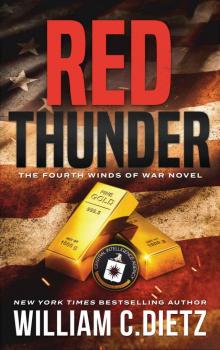 Red Thunder (Winds of War Book 4)
Red Thunder (Winds of War Book 4)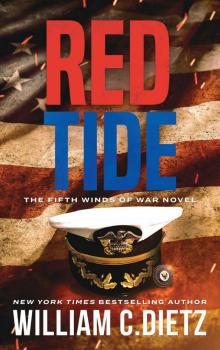 Red Tide
Red Tide Graveyard
Graveyard Deadeye
Deadeye Resistance: The Gathering Storm r-1
Resistance: The Gathering Storm r-1 Legion Of The Damned - 02 - The Final Battle
Legion Of The Damned - 02 - The Final Battle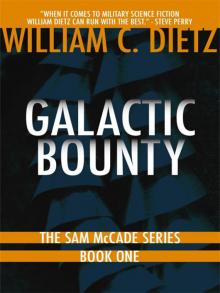 Galactic Bounty
Galactic Bounty When All Seems Lost
When All Seems Lost Red Flood (Winds of War Book 2)
Red Flood (Winds of War Book 2) By Blood Alone
By Blood Alone Andromeda's War (Legion of the Damned Book 3)
Andromeda's War (Legion of the Damned Book 3)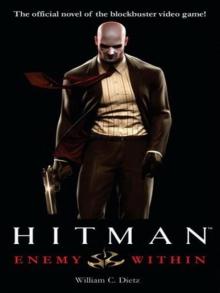 Hitman: Enemy Within
Hitman: Enemy Within Bodyguard
Bodyguard EarthRise
EarthRise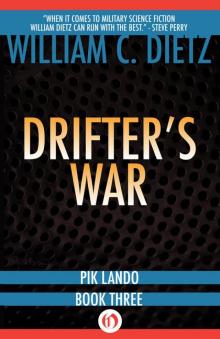 Drifter's War
Drifter's War For More Than Glory
For More Than Glory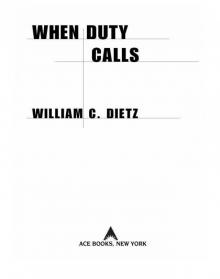 When Duty Calls
When Duty Calls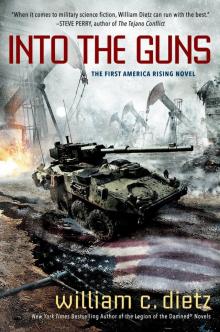 Into the Guns
Into the Guns Drifter
Drifter Ejecta
Ejecta When All Seems Los lotd-7
When All Seems Los lotd-7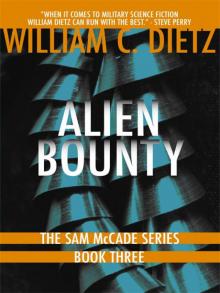 Alien Bounty
Alien Bounty When Duty Calls lotd-8
When Duty Calls lotd-8 Steelheart
Steelheart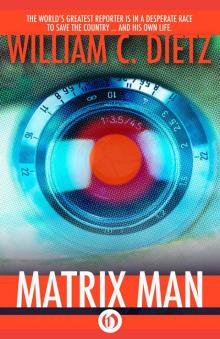 Matrix Man
Matrix Man Legion of the Damned
Legion of the Damned Snake Eye
Snake Eye Logos Run
Logos Run Bones of Empire
Bones of Empire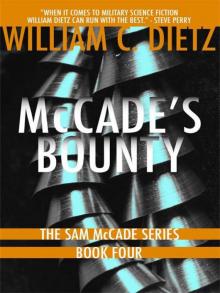 McCade's Bounty
McCade's Bounty Mars Prime
Mars Prime Where the Ships Die
Where the Ships Die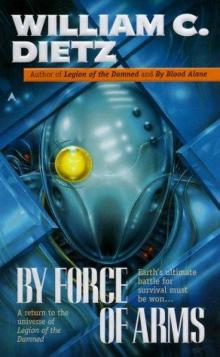 By force of arms lotd-4
By force of arms lotd-4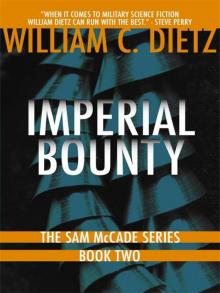 Imperial Bounty
Imperial Bounty Legion Of The Damned - 01 - Legion of the Damned
Legion Of The Damned - 01 - Legion of the Damned Hitman: Enemy Within h-1
Hitman: Enemy Within h-1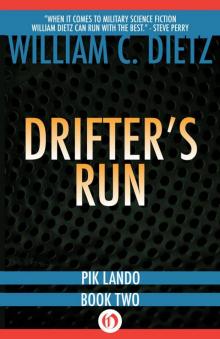 Drifter's Run
Drifter's Run A Fighting Chance
A Fighting Chance McCade on the Run (Sam McCade Omnibus)
McCade on the Run (Sam McCade Omnibus) Legion Of The Damned - 06 - For Those Who Fell
Legion Of The Damned - 06 - For Those Who Fell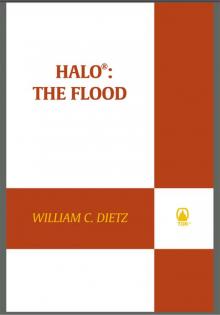 Halo. Flood
Halo. Flood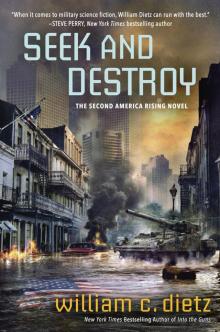 Seek and Destroy
Seek and Destroy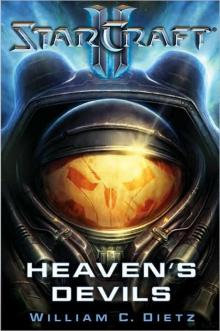 Heaven's Devils si-1
Heaven's Devils si-1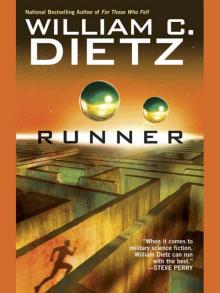 Runner
Runner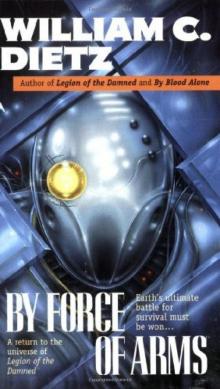 By Force of Arms
By Force of Arms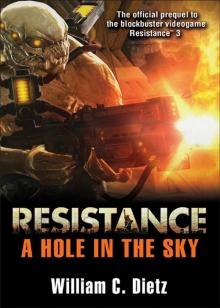 A Hole in the Sky
A Hole in the Sky The Seeds of Man
The Seeds of Man Andromeda's Fall
Andromeda's Fall Andromeda’s Choice
Andromeda’s Choice Prison Planet
Prison Planet Heaven’s Devils
Heaven’s Devils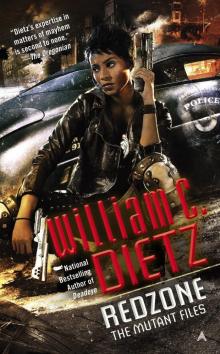 Redzone
Redzone Jedi Knight
Jedi Knight